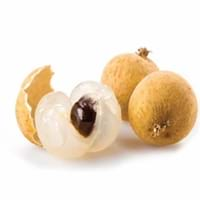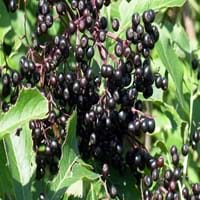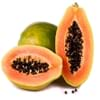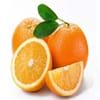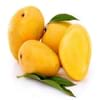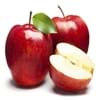Health Benefits
Anti depressant, Anti-inflammatory properties, Healthy mucus membrane, prevents oral cavity cancer, Prevents anemia, Prevents cases of morning sickness, Prevents lung cancer, Skin rejuvenation, Treatment of colonic diseases
Cancer prevention, Heart care
General Benefits
Anti oxidant properties, Anti-inflammatory properties, Digestive aid, Gives you energy, Suppresses Arthritis
Anti oxidant properties, Anti-inflammatory properties, Boosts immune system, Controls blood sugar levels, Cures fever, Digestive aid, Eye care, Fights against infections, Flu treatment, Helps in weight loss, Maintains healthy cholesterol level
Skin Benefits
Reduces wrinkles, Skin rejuvenation
Anti-aging benefits, Skin rejuvenation
Hair Benefits
Not Available
Promotes longer and healthier hair
Allergy Symptoms
Itching, Swelling of mouth, tongue or lips, Tingling sensation in mouth
Abdominal pains, Asthma, NA, Sneezing, Sore throat
Side Effects
Mouth irritation, Weight gain
Diarrhoea, Nausea, Vomiting
Lactating Women
Yes
Not Available
Best Time to Eat
As a snack in the late afternoon
As a snack in the late afternoon, Don't consume at night and before bed, Eat the fresh ones, avoid mixing with any other foods, don't eat after meal., Morning time (before lunch)
Vitamin B5 (Pantothenic Acid)
Vitamin C (Ascorbic Acid)
Calories in Fresh Fruit with Peel
Calories in Fresh Fruit without Peel
Not Available
Not Available
Calories in Frozen Form
Not Available
Not Available
Calories in Dried Form
Not Available
Calories in Canned Form
Not Available
Not Available
Calories in Jam
Not Available
Type
Tree fruit, Tropical
Berry
Season
Mid to late summer
Autumn
Varieties
Chompoo Longan, Kohala Seedling, Haew, Edau and Biew Kiew
Adams, Black Beauty, Black Lace, Johns, Nova, Variegated and York
Seedless Variety
Not Available
No
Color
Rusty brown
Black, Red
Inside Color
Yellowish brown
Magenta
Taste
Sweetish
Juicy, Sweet
Soil Type
Well-drained
Sandy, Well-drained
Climatic Conditions
Sunny, Warm, Without frosts
Warm to hot climate
Facts about
- Longan is also called as "Dragon's eye" in China as it gives an impression of an eyeball.
- Longan seeds can be used to absorb the venom after the snake bite and they also help to stop bleeding.
- According to a superstitious belief, the "elder tree" was supposed to ward off evil influence & give protection from witches.
- Branches from its tree are also used to make fujara, koncovka & other Slovakian flutes.
Top Producer
Thailand
United States of America
Other Countries
Australia, Combodia, Taiwan, United States of America, Vietnam
Colombia, India, Mexico
Top Importer
China
Not Available
Top Exporter
Thailand
Not Available
Botanical Name
Dimocarpus longan
Sambucus nigra
Synonym
Dragon eye
Not Available
Subkingdom
Viridiplantae
Tracheobionta
Division
Tracheophyta
Magnoliophyta
Class
Magnoliopsida
Magnoliopsida
Subclass
Rosidae
Asteridae
Order
Sapindales
Dipsacales
Family
Sapindaceae
Adoxaceae
Genus
Dimocarpus
Sambucus
Species
D. longan
S. nigra
Generic Group
Not Available
Moschatel
Difference Between Longan and Elderberry
We might think that Longan and Elderberry are similar with respect to nutritional value and health benefits. But the nutrient content of both fruits is different. Longan and Elderberry Facts such as their taste, shape, color, and size are also distinct. The difference between Longan and Elderberry is explained here.
The amount of calories in 100 gm of fresh Longan and Elderberry with peel is 83.00 kcal and 73.00 kcal and the amount of calories without peel is Not Available and Not Available respectively. Thus, Longan and Elderberry belong to and category.These fruits might or might not differ with respect to their scientific classification. The order of Longan and Elderberry is Sapindales and Dipsacales respectively. Longan belongs to Sapindaceae family and Elderberry belongs to Adoxaceae family. Longan belongs to Dimocarpus genus of D. longan species and Elderberry belongs to Sambucus genus of S. nigra species. Beings plants, both fruits belong to Plantae Kingdom.
